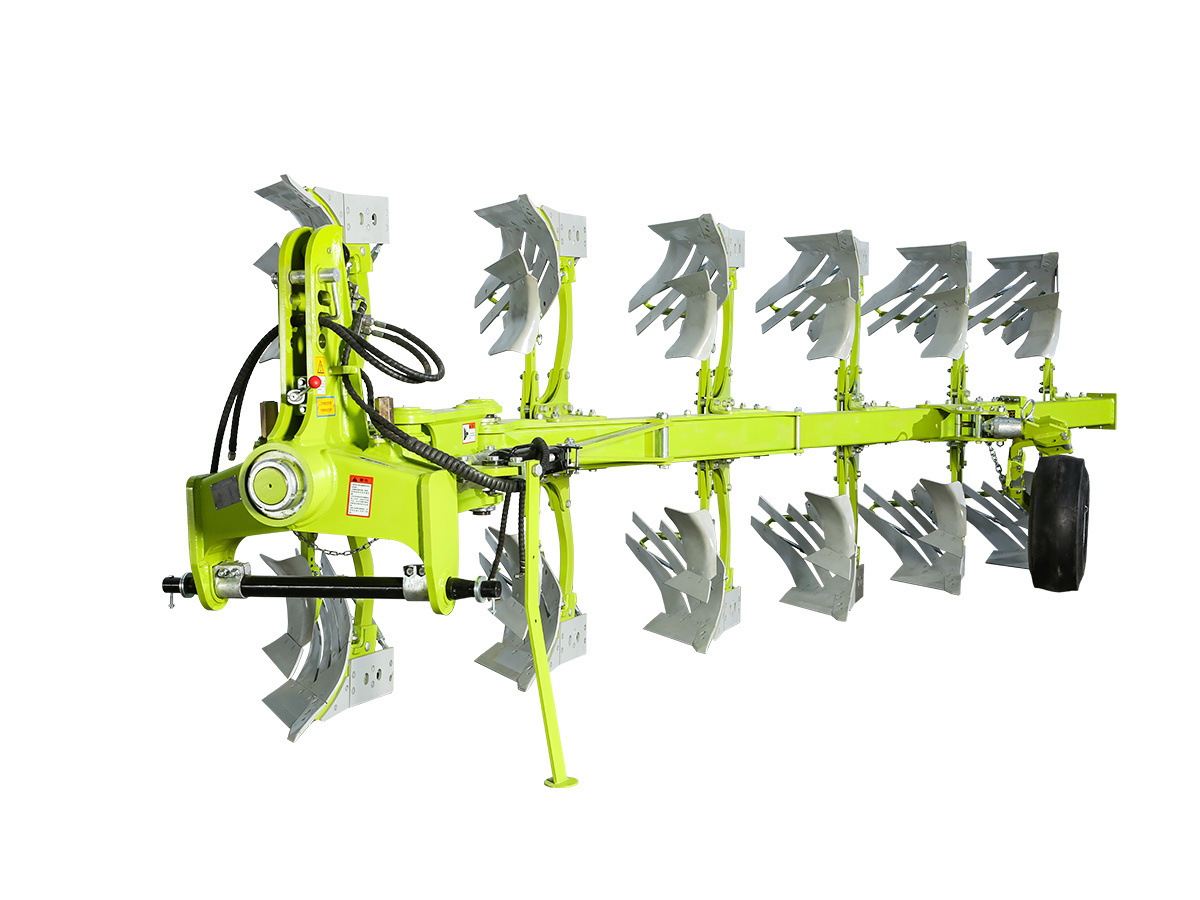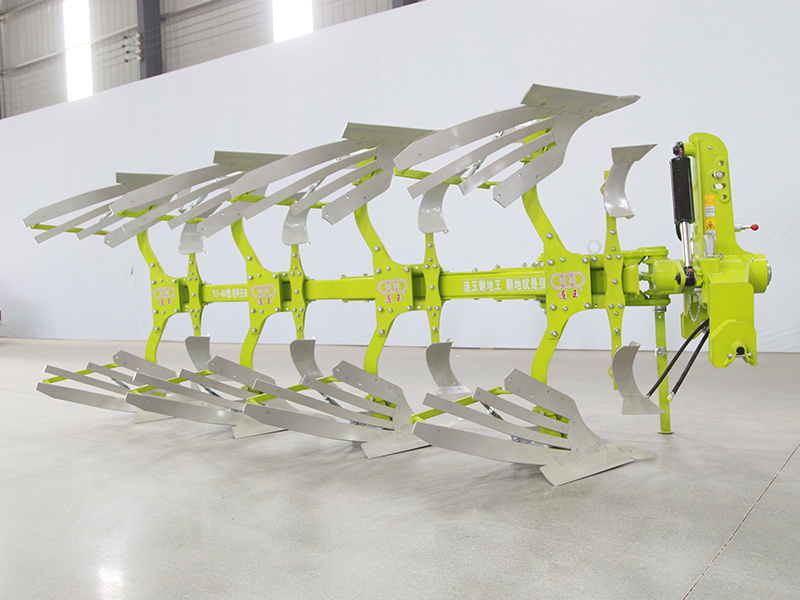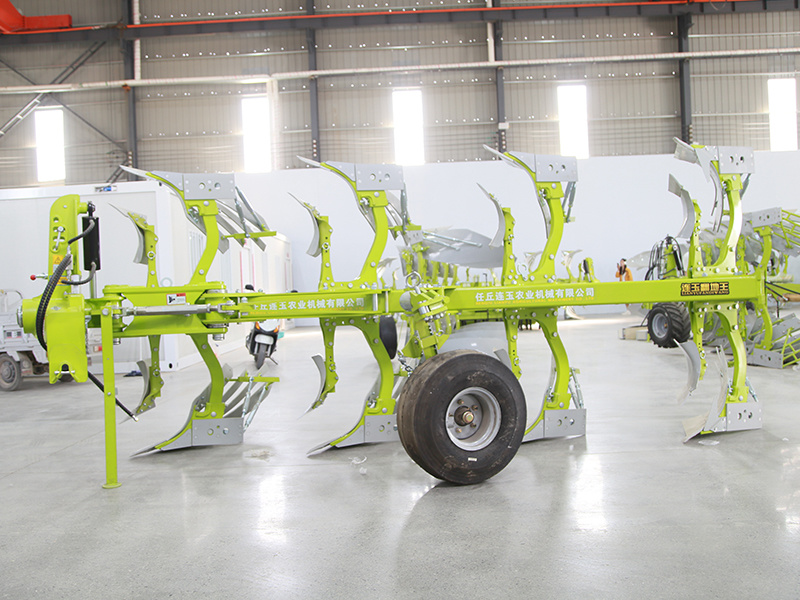Gexinzhuang Industrial Zone, Yilunbao Town, Renqiu City, Hebei Province, China
Unlocking Efficiency: The Benefits of Using a Hydraulic Reversible Plow
2025-07-31
Summary:
Unlocking Efficiency: The Benefits of Using a Hydraulic Reversible Plow
Table of Contents
1. Introduction
2. What is a Hydraulic Reversible Plow?
3. How Does a Hydraulic Reversible Plow Work?
4. Advantages of Using a Hydraulic Reversible Plow
4.1. Efficiency in Plowing
4.2. Enhanced Soil Health
4.3. Time-Saving Benefits
4.4.

Unlocking Efficiency: The Benefits of Using a Hydraulic Reversible Plow
Table of Contents
- 1. Introduction
- 2. What is a Hydraulic Reversible Plow?
- 3. How Does a Hydraulic Reversible Plow Work?
- 4. Advantages of Using a Hydraulic Reversible Plow
- 4.1. Efficiency in Plowing
- 4.2. Enhanced Soil Health
- 4.3. Time-Saving Benefits
- 4.4. Cost-Effectiveness
- 4.5. Versatility and Adaptability
- 5. Factors to Consider When Choosing a Hydraulic Reversible Plow
- 6. Maintenance Tips for Hydraulic Reversible Plows
- 7. Case Studies: Successful Implementation
- 8. Conclusion
- 9. Frequently Asked Questions
1. Introduction
In the world of agriculture, efficiency and productivity are paramount. As farming practices evolve, new technologies emerge to meet the demands of modern agriculture. One such advancement is the **hydraulic reversible plow**. This innovative piece of equipment offers numerous benefits that can dramatically improve farming operations. In this article, we will delve into the various advantages of using a hydraulic reversible plow, how it operates, and why it should be an integral part of your farming toolkit.
2. What is a Hydraulic Reversible Plow?
A hydraulic reversible plow is a type of plow that allows the farmer to turn the soil in two directions without having to lift and reposition the plow. This equipment utilizes hydraulic systems for quick adjustments and efficient operation. Unlike traditional plows that require multiple passes to till the soil, the reversible plow can switch directions seamlessly, making it an attractive option for large fields.
3. How Does a Hydraulic Reversible Plow Work?
The operation of a hydraulic reversible plow is based on its unique design, which consists of two sets of moldboards that can be flipped back and forth. The hydraulic system controls the angle and depth of the plow's penetration into the soil. When one side completes its task of tilling the soil, the hydraulic mechanism reverses the plow to work on the other side. This functionality ensures that farmers can plow larger areas in less time, making the hydraulic reversible plow an invaluable asset.
4. Advantages of Using a Hydraulic Reversible Plow
The use of a hydraulic reversible plow presents several advantages that can enhance farming efficiency significantly. Below, we explore these benefits in detail.
4.1. Efficiency in Plowing
The primary advantage of a hydraulic reversible plow is its efficiency. By allowing farmers to plow in both directions without lifting the implement, it reduces the time needed for each plowing pass. This efficiency translates to more significant productivity on the farm, enabling farmers to complete their tasks in a shorter period.
4.2. Enhanced Soil Health
Maintaining healthy soil is crucial for crop success, and the hydraulic reversible plow contributes positively to soil health. The plow aerates the soil without excessive disturbance, promoting better water infiltration and nutrient absorption. Additionally, the plowing process encourages the breakdown of organic matter, enriching the soil and fostering a favorable environment for crops.
4.3. Time-Saving Benefits
In agriculture, time is of the essence. The hydraulic reversible plow allows farmers to save valuable time during the plowing process. With its ability to switch directions quickly, farmers can reduce the amount of time spent in the field. This time-saving feature frees up farmers to focus on other essential tasks, such as planting and crop maintenance.
4.4. Cost-Effectiveness
Investing in a hydraulic reversible plow can lead to cost savings in the long run. By increasing efficiency and reducing labor time, farmers can lower their overall operational costs. Additionally, the durable construction of these plows means less frequent replacements and repairs, further contributing to cost-effectiveness.
4.5. Versatility and Adaptability
A hydraulic reversible plow is versatile and adaptable to various soil conditions and crop types. Whether dealing with heavy clay soil or sandy terrain, the adjustable features of the plow can accommodate different farming needs. This versatility makes it an ideal choice for farmers who manage diverse agricultural operations.
5. Factors to Consider When Choosing a Hydraulic Reversible Plow
When selecting a hydraulic reversible plow, several factors come into play. Understanding these can ensure you make the right investment for your farming needs.
1. **Size and Weight**: Choose a plow that matches your tractor's horsepower and weight capabilities. An appropriately sized plow will operate more efficiently and safely.
2. **Soil Type**: Consider the type of soil you will be working with. Some plows are designed for specific soil types, while others offer more flexibility.
3. **Features and Adjustability**: Look for plows with adjustable features that suit your farming practices, such as depth control and moldboard angle adjustments.
4. **Brand Reputation**: Research the manufacturers and their reputation for quality and customer support. Investing in a reliable brand can save you from future maintenance issues.
5. **Budget**: Determine your budget before making a purchase. While it’s tempting to buy the cheapest option, consider the long-term value and efficiency gains of a higher-quality plow.
6. Maintenance Tips for Hydraulic Reversible Plows
Proper maintenance of your hydraulic reversible plow is essential for longevity and efficient operation. Here are some tips to keep your plow in top shape:
1. **Regular Inspections**: Frequently check the hydraulic system for leaks and ensure all connections are secure.
2. **Cleaning**: After each use, clean the plow to remove soil and debris, preventing corrosion and wear.
3. **Lubrication**: Keep moving parts well-lubricated to minimize friction and prevent wear.
4. **Storage**: Store the plow in a dry, sheltered location to protect it from the elements when not in use.
5. **Professional Servicing**: Schedule regular professional maintenance to identify and address potential issues before they escalate.
7. Case Studies: Successful Implementation
Several farmers have successfully integrated hydraulic reversible plows into their operations, showcasing the tangible benefits of this technology.
- **Case Study 1: Large-Scale Corn Farming**
A farmer in the Midwest implemented a hydraulic reversible plow to maximize efficiency during the prep phase for corn planting. By reducing plowing time by 30%, the farmer was able to allocate time to other critical tasks, leading to a successful planting season and enhanced yield.
- **Case Study 2: Organic Farming**
An organic farmer utilized a hydraulic reversible plow to improve soil health while adhering to organic farming practices. The plow’s ability to minimize soil disturbance led to improved water retention and nutrient availability, significantly boosting crop performance.
- **Case Study 3: Diverse Crop Rotation**
A multi-crop farmer adopted a hydraulic reversible plow to manage soil preparation for various crops. The adaptability of the plow allowed for efficient tilling across different soil types, resulting in improved overall farm productivity.
8. Conclusion
The hydraulic reversible plow is undeniably a powerful tool in modern agriculture. Its ability to enhance efficiency, improve soil health, and save time and costs makes it a worthwhile investment for farmers aiming to elevate their operations. By understanding how this innovative equipment works and the advantages it brings, farmers can make informed decisions that lead to improved crop yields and overall success in their farming endeavors.
9. Frequently Asked Questions
**Q1: What types of crops are best suited for plowing with a hydraulic reversible plow?**
A: Hydraulic reversible plows can be used for a variety of crops, including grains, vegetables, and cover crops. Their versatility makes them suitable for most agricultural applications.
**Q2: How much horsepower is needed for a hydraulic reversible plow?**
A: The required horsepower varies depending on the size and model of the plow. Generally, a tractor with at least 80-100 horsepower is suitable for most hydraulic reversible plows.
**Q3: Can I use a hydraulic reversible plow in wet soil conditions?**
A: While it is possible to use a hydraulic reversible plow in moist conditions, it is advisable to avoid using it in excessively wet soil as it may lead to soil compaction and poor tilling results.
**Q4: How long can a hydraulic reversible plow last with proper maintenance?**
A: With appropriate maintenance and care, hydraulic reversible plows can last for several years, often exceeding a decade, before requiring significant repairs or replacement.
**Q5: Is it necessary to have a specific type of tractor to operate a hydraulic reversible plow?**
A: While specific requirements may vary by model, it is essential to have a tractor capable of handling the weight and size of the plow, along with a compatible hydraulic system.
Incorporating a hydraulic reversible plow into your farming practices could very well be the key to unlocking unprecedented efficiency and productivity on your farm. The numerous advantages this equipment brings can help you stay ahead in the competitive landscape of modern agriculture.
Keywords:
Previous Page
Next Page:
Contact Us
Whatsapp:
Email:
Address:
Ge Xin Zhuang Industrial Zone, Yi Lun Bao Township, Ren Qiu City, Hebei Province,China











